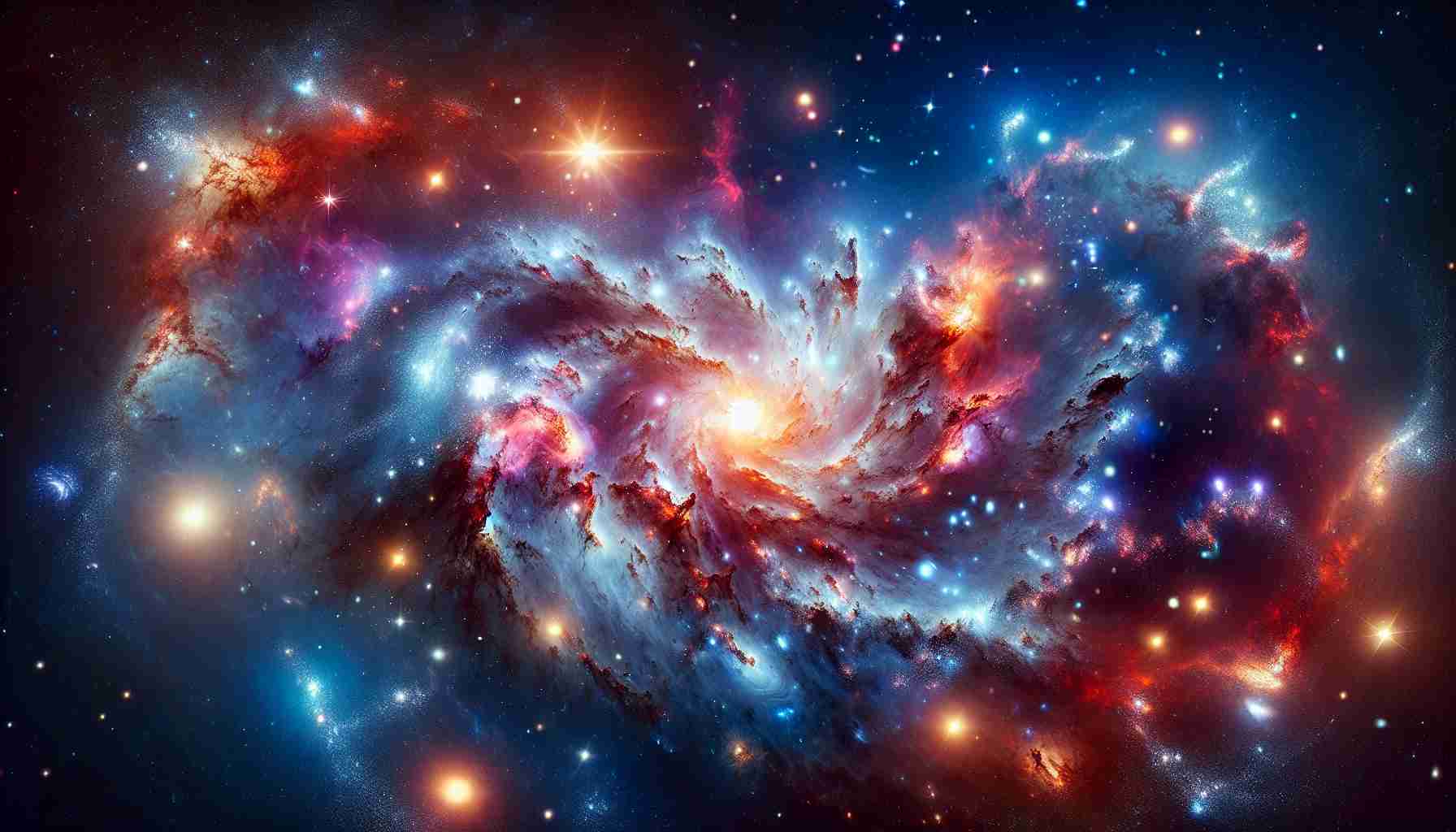
Recent observations from the James Webb Space Telescope have unveiled stunning details about a cosmic event occurring in Arp 107, a remarkable pair of galaxies located 465 million light-years from Earth. This intriguing collision has initiated a cascade of star birth, with the galaxies merging over millions of years. Webb’s advanced infrared technology offers exceptional clarity, allowing scientists to witness the transformations occurring within this galactic pair.
During a galactic collision, vast quantities of gas are compressed, creating an environment conducive to star formation. In the case of Arp 107, a collision between a spiral galaxy and an elliptical galaxy is intensifying these processes. The combination of gas and dust being pulled together has resulted in newly formed stars illuminated within the spiral’s arms. The presence of specific organic compounds, known for their glow in infrared light, emphasizes the active regions of star creation.
The role of supermassive black holes cannot be understated in this cosmic drama. In the spiral galaxy of Arp 107, the black hole at its core significantly influences the merger dynamics. It attracts surrounding gas and dust and alters the galactic structures, yielding jets that can expel material. This complex interplay of forces showcases both the creation and destruction inherent in galaxy formations.
As this cosmic collision unfolds over the coming eons, the eventual outcome remains a subject of great intrigue. The merging galaxies will evolve into a new entity, providing astronomers with essential insights into the lifecycle of galaxies in the universe. Webb’s capabilities allow researchers to meticulously observe and understand these magnificent cosmic transitions.
Galactic Encounters: The Birth of Stars Amidst Cosmic Collisions
The wonders of the universe continue to unfold with insights from ongoing astronomical studies, particularly concerning galactic collisions like that of Arp 107. These cosmic encounters not only spawn new star systems but also raise pivotal questions regarding their long-term implications for galaxy evolution and structure.
What key factors influence star formation during galactic collisions? The primary drivers are gas density, gravitational interactions, and the temperature of the interstellar medium. High-density areas resulting from the collision act as stellar nurseries, while gravitational forces initiate the gathering and compressing of gas clouds, leading to warmer temperatures that further accelerate star formation.
What are the primary challenges associated with studying galactic collisions? One of the main difficulties lies in the vast time scales involved. These processes can take millions to billions of years, making real-time observation challenging. Furthermore, distinguishing between the various sources of emissions—such as stars, dust, and gases—requires advanced imaging techniques and extensive data analysis, often made possible by powerful telescopes like the James Webb Space Telescope.
What controversies exist within the scientific community regarding the effects of supermassive black holes during collisions? There is ongoing debate about the extent to which supermassive black holes influence star formation rates. While some studies suggest they inhibit the formation of new stars by expelling gas through their energetic jets, other research has found that the chaotic gravitational environment they create may actually trigger star formation in surrounding materials.
Advantages of studying galactic collisions include the following:
1. Understanding Galaxy Formation: These events provide critical insights into how galaxies evolve, merge, and form new structures—knowledge essential for theories of cosmic evolution.
2. Star Formation Insights: Research related to star formation during collisional events enhances our understanding of the life cycle of matter in the universe.
3. Testing Theories of Dark Matter and Energy: Observations help scientists formulate and refine theories regarding the mysterious components of the universe.
However, there are notable disadvantages:
1. Resource Demand: High-resolution observations require significant financial and technological resources, which may limit accessibility for some research teams.
2. Interpretation Challenges: Data collected can be complex, and false interpretations are possible if variations in galactic compositions are not adequately accounted for.
3. Temporal Limitations: Our observations represent only a snapshot in time, making it challenging to develop comprehensive models of these dynamic processes.
As researchers continue to investigate cosmic phenomena, the merging of galaxies such as Arp 107 highlights the dual nature of creation and destruction inherent in the universe. The collaborative efforts of astronomers worldwide, facilitated by cutting-edge technologies, promise to unveil further secrets regarding the birth of stars amidst these awe-inspiring celestial collisions.
For ongoing developments in this field, you may explore NASA’s official site and stay informed about new discoveries and insights related to galactic phenomena.



